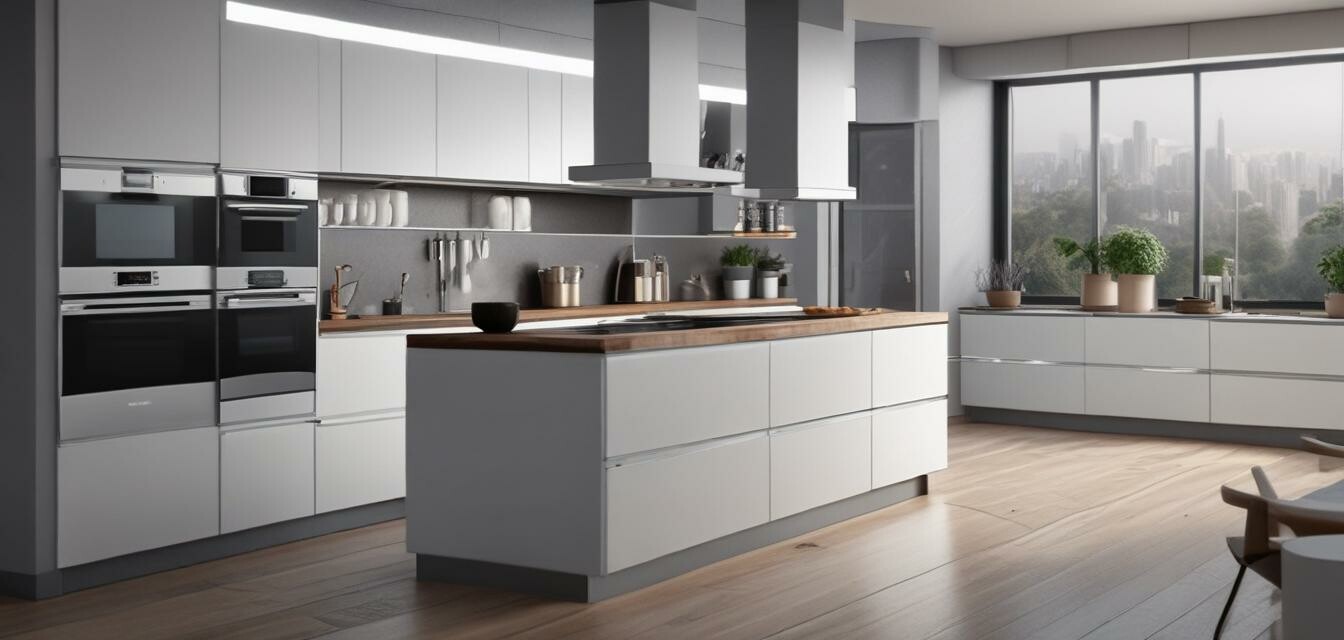
How robotics are transforming smart kitchens
- Robotics enhance the efficiency and convenience of kitchen tasks.
- Integration of robotics in appliances leads to smarter cooking experiences.
- Advanced robotics are set to revolutionize kitchen functionalities further in the coming years.
- Understanding the trends and innovations in robotics can help homeowners make informed decisions.
In today's rapidly advancing technological landscape, the integration of robotics into kitchen appliances is transforming the way we cook and manage our kitchens. As we embrace these innovations, it's essential to understand how they improve cooking efficiency and enhance our everyday experiences in the heart of our homes.
The rise of robotics in kitchen appliances
The prevalence of robotics in kitchen appliances is a testament to the industry's commitment to innovation. From smart ovens that adjust cooking times to multi-functional cookers that can prepare a variety of dishes, robotics play a pivotal role in streamlining cooking processes.
Key innovations in robotic kitchen appliances
| Appliance Type | Key Features | Benefits |
|---|---|---|
| Smart Ovens | Automated cooking programs, temperature control | Consistency in cooking results, energy efficiency |
| Robotic Chef | Ingredient recognition, pre-programmed recipes | Hands-free cooking, time-saving |
| Touchless Faucets | Motion-sensor activation | Water conservation, convenience |
| Smart Refrigerators | Inventory management, meal planning collaboration | Food waste reduction, smarter grocery shopping |
The impact on cooking efficiency
With these advancements, cooking efficiency is being revolutionized. Robotics in the kitchen not only enable streamlined processes but also reduce the time and effort needed for meal preparation. For instance, robotic chefs can autonomously chop, mix, and cook, allowing busy homeowners to focus on other essential tasks.
Examples of improved cooking processes
- Automated meal prep saves time and effort.
- Smart ovens adapt cooking settings based on food type.
- Touchless faucets reduce cross-contamination.
Future trends in robotic kitchen technology
The future of robotics in smart kitchens looks promising. Several emerging trends signal a shift toward even more sophisticated appliances.
Trends to watch
- Enhanced AI Integration: Smarter algorithms will allow appliances to learn from user preferences, improving cooking results over time.
- Collaborative Cooking: Appliances will communicate with each other for better synergy during meal preparation.
- Eco-Friendly Solutions: Robotics will focus on sustainability, using energy-efficient processes and materials.
Conclusion
The integration of robotics into kitchen appliances is ushering in a new era of cooking efficiency and convenience. As technology continues to evolve, both homeowners and cooking enthusiasts can expect even smarter, more innovative solutions that enrich their culinary experiences.
Pros
- Increased cooking efficiency and reduced preparation time
- Improved consistency in food quality
- Enhanced convenience with hands-free operation
Cons
- Higher initial investment for advanced models
- Dependence on technology can be challenging
- Potential maintenance issues with complex systems
Learn more about smart kitchen technology
If you're interested in exploring more about smart kitchen innovations, check out these links to enhance your understanding: